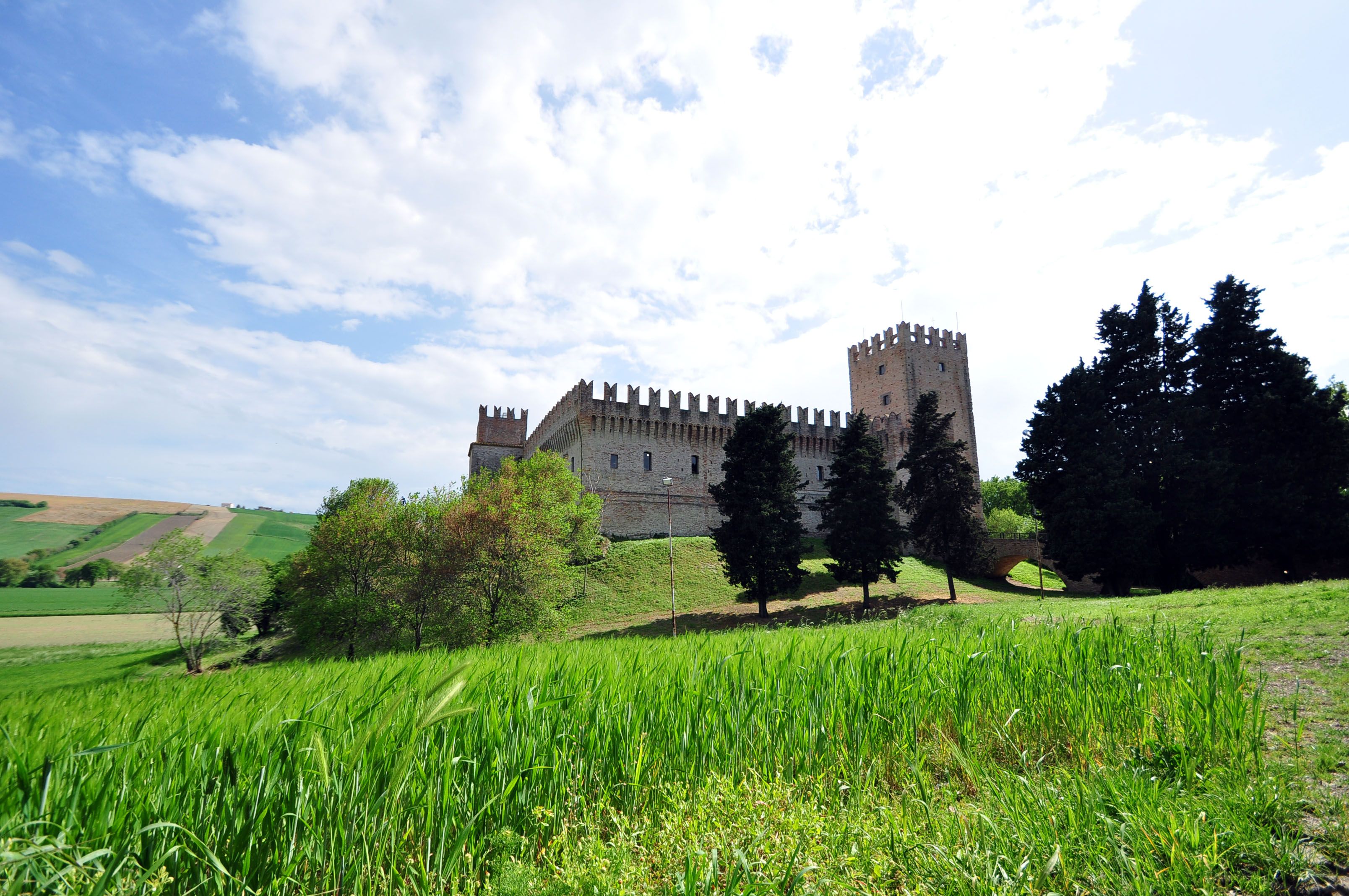A castle on the plain
Castles usually stand perched on heights, on impervious rocks, on hills. In Marche
there is one that rises in the middle of the Chienti plain: it is the Rancia Castle which
it is located 7 kilometers from the city of Tolentino.
This position is due to the fact that it was born as a fortified farm because i
Cistercian monks from the Abbey of Fiastra needed to look after the agricultural commodities
and to defend them from possible attacks by predators.
The name is said to derive from the term grancia, or granary, or from the derivative term
Latin granica, the word with which the monks called these farms.
The vicissitudes of the Castle over the centuries have been varied and in different eras
had multiple uses. It was adapted into a real fortress only in the XNUMXth century, by will of
Rudolph II da Varano who considered it useful from a military strategic point of view.
From 1581 it was managed by the Jesuits who also used it as a hostel for pilgrims. In the
1782 Pope Pius VI had a lush garden built there, now unfortunately lost, and
subsequently granted ownership of the Castle and that of the Abbey of Fiastra to
Marchesi Bandini. In 1815 it was the scene of a bloody battle which saw the city succumb
Joachim Murat to the Austrians.
The transfer of ownership to the Municipality of Tolentino, which has it, is relatively recent (1974).
then entrusted the management to the Meridiana Cooperativa Sociale.
The building has a quadrangular shape and the crenellated walls are strengthened by three corner towers.
The keep, the main tower, is spread over four floors and is 30 meters high. His basement
it was used as a prison. The courtyard gives access to a baroque chapel built by the Jesuits. A
legend has it that there is a secret tunnel that should connect the castle
at the Basilica of San Nicola, in the center of Tolentino.
No interior furnishings have been preserved, but today the interiors are enriched by various
exhibitions and artistic events. There are many events proposed in this setting, from
musical ones, cultural ones, those dedicated to the little ones such as Christmas at the Castle
della Rancia or the historical re-enactment of the Battle of Tolentino which is repeated every three years
and the next one is scheduled for spring 2021.
The Castle is the permanent home of the Aristide Gentiloni Silverj Civic Museum, archaeologist of
areas of the Chienti plain and the Exhibition of the Rancia Theater Company,
an overview of over thirty years of scenography, tailoring and preparation work
shows of this important theatrical reality.
Since 1961 the international Biennial has been organized in the halls of the Castle
of Humor in Art and the Museum of Caricature, interesting reviews that the critic
Federico Zeri illustrated with these words: «True caricature, great humour,
they are born from intelligence, from mental elegance, from great sensitivity, from genius.
Humor is an essential form of art, and the great Masters in the figurative arts are
have often also been great comedians......The great merit of the city of Tolentino is its own
that of having started, through the Biennial of Humor and the Museum of Caricature
an exemplary historical and critical journey, aimed at knowledge and valorisation
of this non-negligible genre of Italian and international art in the same life
of Man, humor is something decisive, fundamental."
Carla Virili
Previous post
Next post

